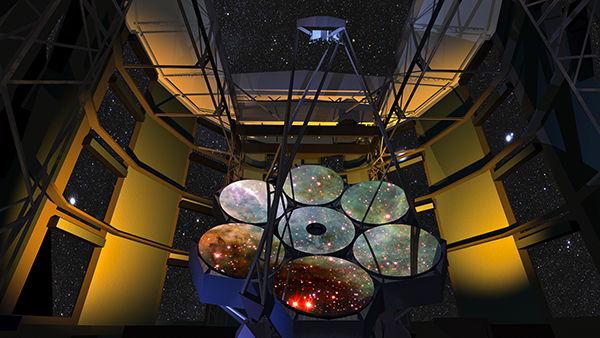Texas A&M secured its position at astronomy’s cutting edge Thursday when a unanimous vote at the A&M Board of Regents meeting approved the final half of it’s $50 million commitment to fund the world’s largest telescope.
Set to open science operations in 2022, the Giant Magellan Telescope is an observatory projected to have 10 times the resolution of the Hubble Space Telescope. Texas A&M and the University of Texas at Austin are two of 11 international partners who hope to start construction in the Chilean desert before summer.
A&M’s recent commitment caps a funding drive begun largely by the efforts of the late George P. Mitchell, who donated close to $28 million toward A&M’s stake before he died in 2013.
Texas A&M and UT have now committed 5 percent of the total cost of the telescope’s construction. A&M officially made a $22 million contribution after Thursday’s meeting on top of the $28.1 million that has already been raised, said Darren DePoy, physics professor and member of GMT’s board of directors.
“We have already committed about $28 million, mostly out of philanthropy from George Mitchell, and some other funds from various pieces of the university,” DePoy said. “What we needed to do is go from $28 million to about $50 million or so. This extra 22 will push us in that direction.”
UT declared $50 million to the GMT in March 2014 after a University of Texas System Regents meeting gave the greenlight. Both A&M and UT hope to raise their commitments to 10 percent, or $100 million.
DePoy said the primary reason for contributing such a large portion to the cost of GMT’s construction is that it will involve A&M in a state-of-the-art, internationally scaled project.
“The total amount of funds gives us enough of a share and stake in the project so that we can have representation on the science advisory committee and on the board,” DePoy said. “It definitely puts us in the position of some prominence in this master astrophysics research facility, as well as to be on par with other partners like Harvard, Chicago, the Carnegie Institution for Science and the country of Australia.”
DePoy said this $22 million commitment will be spread out over a number of years until it is realized.
“What we do is give a certain amount of money every year until we reach that goal, and we will raise that money in various ways,” DePoy said. “Part of it is that we will now get access to grant funding that we otherwise would not have been able to get, because of our participation in the GMT. Grants give a ton of money to the university and that will create a kind of revenue stream that will then go to pay for the telescope. We also have philanthropy money.”
A&M fulfills funding commitment to world’s largest telescope
February 12, 2015

Courtesy of GMTO Corporation
The Giant Magellan Telescope will be 10 times stronger than the Hubble Space Telescope when it comes online in the 2020s.
0
Donate to The Battalion
$1765
$5000
Contributed
Our Goal
Your donation will support the student journalists of Texas A&M University - College Station. Your contribution will allow us to purchase equipment and cover our annual website hosting costs, in addition to paying freelance staffers for their work, travel costs for coverage and more!
More to Discover









